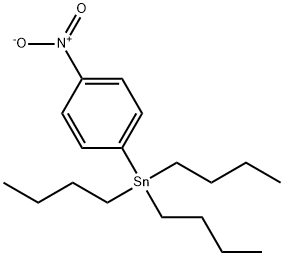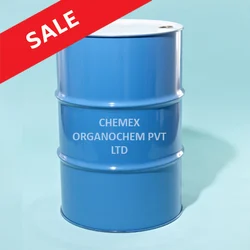Tributyl phosphate
Synonym(s):TBP;TBPA;Tributyl phosphate
- CAS NO.:126-73-8
- Empirical Formula: C12H27O4P
- Molecular Weight: 266.31
- MDL number: MFCD00009436
- EINECS: 204-800-2
- SAFETY DATA SHEET (SDS)
- Update Date: 2025-12-10 11:56:18

What is Tributyl phosphate?
Description
On decomposition, TBP releases COx, toxic fumes of phosphoric acid, phosphorus oxides, and/or phosphine. TBP is incompatible with strong oxidising agents and alkalis. The major uses of TBP in industry are as a component of aircraft hydraulic fluid and as a solvent for rare earth extraction and purification. Minor uses of TBP include use as a defoamer additive in cement casings for oil wells, an anti-air entrainment additive for coatings and floor finishes, as well as a carrier for fluorescent dyes. The major uses of TBP comprise over 80% of the volume produced.
Chemical properties
Stable, colorless liquid; odorless. Miscible with most solvents and diluents; soluble in water. Combustible.
Physical properties
Clear, colorless to pale yellow, odorless, slightly flammable, oily liquid
The Uses of Tributyl phosphate
Tributyl phosphate is used as an antifoaming agent; plasticizer for cellulose esters, lacquers, plastic, and vinyl resins; component in hydraulic fluids for aircraft control systems.
The Uses of Tributyl phosphate
Plasticizer for cellulose esters, lacquers, plastics, and vinyl resins.
The Uses of Tributyl phosphate
Tributyl phosphate is used as a plasticizer for cellulose esters, vinyl resins, and lacquers; and in making fireretardants, biocides, defoamers, and catalysts.
Definition
ChEBI: A trialkyl phosphate that is the tributyl ester of phosphoric acid.
Production Methods
Prepared by the reaction of phosphorus oxychloride with butyl alcohol.
General Description
Tributyl phosphate is an organophosphorus compound, which is widely used as a flame retardant and plasticizer in a variety of industrial products.
Air & Water Reactions
Water insoluble. Reacts slowly with water under basic conditions.
Reactivity Profile
Tributyl phosphate is incompatible with strong oxidizing agents and strong bases. Attacks some forms of plastics and rubber .
Health Hazard
Tributyl phosphate is a neurotoxic compound and an irritant. The toxic effects are characteristic of organic phosphates. It inhibits cholinesterase activity and causes paralysis. Inaddition,itcancausedepressionofthecentralnervoussystem,aswellasirritationofthe skin,eyes,andrespiratorypassage.Inhalation toxicity data in the literature are inconsistent.
The oral toxicity in rats was low; the LD50 value was reported as 1189 mg/kg (NIOSH 1986).
The pure liquid instilled into rabbits’ eyes caused severe irritation but no permanent damage. The irritation effect on the skin is mild.
Tributyl phosphate exhibited teratogenic effects in rats. There is no report on its carcinogenicity..
Fire Hazard
Special Hazards of Combustion Products: Toxic fumes of PO x
Industrial uses
1. As an antifoaming agent.
2. As a plasticizer for cellulose esters, lacquers, plastics, and vinyl resins.
3. As a complexing agent in the extraction of heavy metals, especially for the
extraction of metal ions from solutions of reactor products in nuclear fuel
reprocessing.
4. As an aircraft hydraulic fluid.
5. As a heat exchange medium and dielectric.
6. As a pigment-grinding agent.
Safety Profile
Poison by intraperitoneal and intravenous routes. Moderately toxic by ingestion, inhalation, and subcutaneous routes. Experimental reproductive effects. A skin, eye, and mucous membrane irritant. Combustible when exposed to heat or flame. To fight fire, use CO2, dry chemical, fog, mist. When heated to decomposition it emits toxic fumes of POx.
Carcinogenicity
TBP was not genotoxic in a variety of
in vivo and in vitro assays.7 It has been suggested
that the carcinogenic effects of TBP are
species- and organ specific. The necrotic
actions of TBP (or a metabolite) on rat urinary
bladder epithelium may induce chronic repair
processes that cause the normal epithelium to
be transformed into its metaplastic and neoplastic
forms.
TBP was not teratogenic when administered
to rats and rabbits during gestation;
fetotoxic effects (delayed ossification and reduced
fetal body weights) occurred in rats at
doses that caused severe maternal toxicity.
There was no evidence of reproductive toxicity
or reproductive organ pathology in twogeneration
studies in rats fed TBP in the diet.
Environmental Fate
Biological. Indigenous microbes in Mississippi River water degraded tributyl phosphate to
carbon dioxide. After 4 wk, 90.8% of the theoretical carbon dioxide had evolved (Saeger et al.,
1979).
Chemical/Physical. Complete hydrolysis yields 1-butanol and phosphoric acid via the
intermediates dibutyl phosphate and monobutyl phosphate (Thomas and Macaskie, 1996).
Purification Methods
The main contaminants in commercial samples are organic pyrophosphates, monoand dibutyl phosphates and butanol. It is purified by washing successively with 0.2M HNO3 (three times), 0.2M NaOH (three times) and water (three times), then fractionally distilled under vacuum. [Yoshida J Inorg Nucl Chem 24 1257 1962.] It has also been purified via its uranyl nitrate addition compound, obtained by saturating the crude phosphate with uranyl nitrate. This compound is crystallised three times from n-hexane by cooling to -40o, and then decomposed by washing with Na2CO3 and water. Hexane is removed by steam distillation; the water is then evaporated under reduced pressure, and the residue is distilled under reduced pressure. [Siddall & Dukes J Am Chem Soc 81 790 1959.] Alternatively, wash it with water, then with 1% NaOH or 5% Na2CO3 for several hours, then finally with water. Dry it under reduced pressure and fractionate it carefully under vacuum. It is a stable colourless oil, sparingly soluble in H2O (1mL dissolves in 165mL of H2O), but freely miscible in organic solvents. [Kuivila & Masterton J Am Chem Soc 74 4953 1952, Cox & Westheimer J Am Chem Soc 80 5441 1958, 31P NMR: Van Wazer J Am Chem Soc 78 5715 1956, Fertig et al. J Chem Soc 1488 1957, Beilstein 1 IV 1531.]
Waste Disposal
Tributyl phosphate is dissolved in a combustible solvent and is burned in a chemical incinerator equipped with an afterburner and scrubber.
Properties of Tributyl phosphate
| Melting point: | -79 °C (lit.) |
| Boiling point: | 180-183 °C/22 mmHg (lit.) |
| Density | 0.979 g/mL at 25 °C (lit.) |
| vapor density | 9.2 (vs air) |
| vapor pressure | 27 mm Hg ( 178 °C) |
| refractive index | n |
| Flash point: | 380 °F |
| storage temp. | Store below +30°C. |
| solubility | water: soluble1ml in 165ml water |
| form | Liquid |
| color | Clear |
| Odor | Odorless |
| Water Solubility | 0.6 g/100 mL |
| Merck | 14,9618 |
| BRN | 1710584 |
| Exposure limits | TLV-TWA 2.18 mg/m3 (0.2 ppm) (ACGIH), 5 mg/m3 (OSHA and NIOSH); IDLH 1300 mg/m3 (120 ppm) (NIOSH). |
| Dielectric constant | 6.5(20℃) |
| Stability: | Stable. Combustible. Incompatible with strong oxidizing agents. May be water sensitive. |
| CAS DataBase Reference | 126-73-8(CAS DataBase Reference) |
| NIST Chemistry Reference | Tri-n-butylphosphate(126-73-8) |
| EPA Substance Registry System | Tributyl phosphate (126-73-8) |
Safety information for Tributyl phosphate
| Signal word | Warning |
| Pictogram(s) |
 Exclamation Mark Irritant GHS07  Health Hazard GHS08 |
| GHS Hazard Statements |
H302:Acute toxicity,oral H315:Skin corrosion/irritation H351:Carcinogenicity H412:Hazardous to the aquatic environment, long-term hazard |
| Precautionary Statement Codes |
P201:Obtain special instructions before use. P202:Do not handle until all safety precautions have been read and understood. P273:Avoid release to the environment. P301+P312:IF SWALLOWED: call a POISON CENTER or doctor/physician IF you feel unwell. P302+P352:IF ON SKIN: wash with plenty of soap and water. P308+P313:IF exposed or concerned: Get medical advice/attention. |
Computed Descriptors for Tributyl phosphate
Tributyl phosphate manufacturer
JSK Chemicals
Chemex Organochem Private Limited
Rasayan Trading Co.
Panchamrut Chemicals
New Products
4,4-Difluoropiperidine hydrochloride tert-butyl 9-methoxy-3-azaspiro[5.5]undecane-3-carboxylate Indole Methyl Resin N-Isopropylurea N,N-Dicyclohexylcarbodiimide(DCC) MELDRUMS ACID 5-METHYLISOXAZOLE-4-CARBOXYLIC ACID Magnessium Bis glycinate Zinc ascorbate 1-bromo-2-butyne 2-acetamidophenol 9(10H)-anthracenone Erythrosin B, 4-Piperidinopiperidine 2-((4-morpholinophenylamino) (methylthio) methylene) malononitrile 2,4-dihydroxybenzaldehyde 3-(4-morpholinophenylamino)-5-amino-1H-pyrazole-4-carbonitrile Methyl 2-methylquinoline-6-carboxylate 2,6-dichloro-4-nitropyridine 4-Bromo-2-chlorobenzonitrile 2-(benzylamino)acetic acid hydrochloride 4-(tert-Butoxycarbonylamino)but- 2-ynoic acid 3,4-dihydro-2H-benzo[b][1,4]dioxepine 1-Phenyl-1-cycloprppanecarboxylicacidRelated products of tetrahydrofuran








You may like
-
 Tributylphosphate extrapure CAS 126-73-8View Details
Tributylphosphate extrapure CAS 126-73-8View Details
126-73-8 -
 Tributyl Phosphate Tbp, 200 Kg, For IndustrialView Details
Tributyl Phosphate Tbp, 200 Kg, For IndustrialView Details
126-73-8 -
 Tributyl Phosphate 99View Details
Tributyl Phosphate 99View Details
126-73-8 -
 Tri Butyl Phosphate 126-73-8View Details
Tri Butyl Phosphate 126-73-8View Details
126-73-8 -
 Liquid Tri Butyl Phosphate, Grade Standard: Technical Grade, Packaging Type: DrumView Details
Liquid Tri Butyl Phosphate, Grade Standard: Technical Grade, Packaging Type: DrumView Details
126-73-8 -
 Liquid Tributyl Phosphate, Grade Standard: Technical Grade, 200View Details
Liquid Tributyl Phosphate, Grade Standard: Technical Grade, 200View Details
126-73-8 -
 Tributyl Phosphate, Grade Standard: Technical Grade, BarrelView Details
Tributyl Phosphate, Grade Standard: Technical Grade, BarrelView Details
126-73-8 -
 Liquid Tributyl PhosphateView Details
Liquid Tributyl PhosphateView Details
126-73-8
